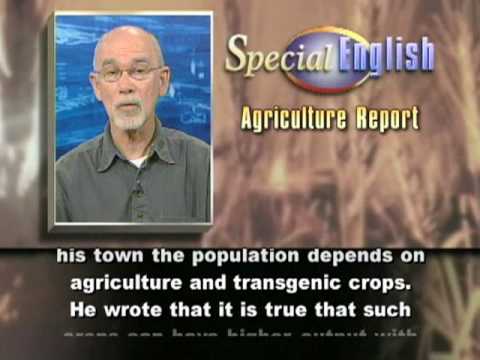Why Grafting Still Fits Nicely Into Agriculture
 |
This is the VOA Special English Agriculture Report, from voaspecialenglish.com | facebook.com/voalearningenglish
Grafting is a way to produce plants from pieces of existing plants instead of seeds. Branches or buds are cut from one plant and placed on a related kind of plant. The branch or bud that is grafted is called the scion. The plant that accepts the graft is called the rootstock. Grafting can join scions with desirable qualities to rootstock that is strong and resists disease and insects. A graft can be cut several ways. One way is a cleft graft. It requires a scion with several buds on it. The bottom of the scion is cut in the shape of the letter V. The scion is then securely placed into a cut on the rootstock. Material called a growth medium is put on the joint to keep it from getting dry and to help the two plants grow together. Many fruits and nuts have been improved through grafting. Flowers can also be improved this way. Some common fruit trees such as sweet cherries and McIntosh apples have to be grafted. Grafting is also used to produce seedless fruits like navel oranges and seedless watermelons. Grafting continues to hold an important place in agriculture even in an age of modern genetic engineering. Recently we told you about a study of genetically engineered crops and how they have affected farming in the United States. The study found that many farmers have better harvests, better weed control and fewer losses from insect damage compared to traditional crops.Our story brought a number of comments, including this one from Odalberto in Brazil. He wrote that in his town the population depends on agriculture and transgenic crops. He wrote that it is true that such crops can have higher output with less cost, but he added: "No one knows the consequences that will have on soil fertility and the human body. Only the future will tell us the truth about transgenic food." Christian in France expressed a different concern. He wrote: " The big problem of the transgenic seeds is that they are the monopoly of big companies. The small farmers cannot reproduce any more seeds by themselves."And Joom from Thailand wrote: "I don't care where the crops come from, natural plants or genetic engineering, as long as we can produce food enough for people."And that's the VOA Special English Agriculture Report. You can comment on our stories and find transcripts, MP3s and podcasts at voaspecialenglish.com.
(Adapted from a radio program broadcast 18May2010)
|




